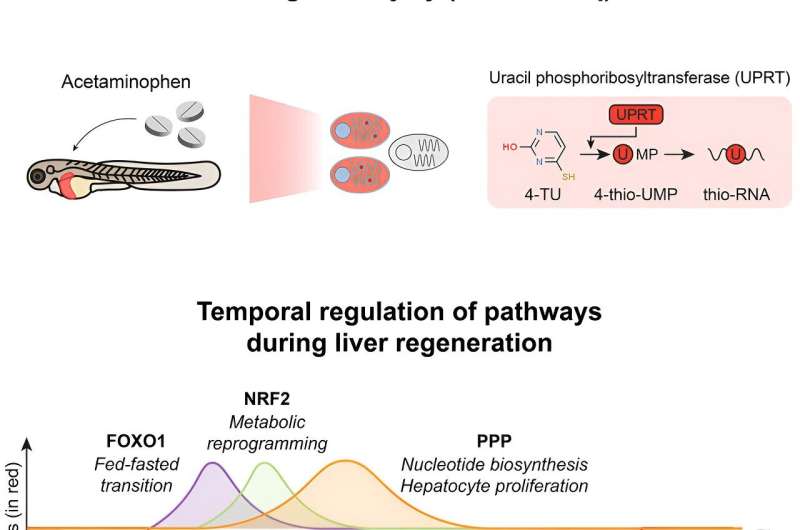This article has been reviewed according to Science X's editorial process and policies. Editors have highlighted the following attributes while ensuring the content's credibility:
fact-checked
trusted source
proofread
One step closer to reversing liver failure: Study shows how liver is triggered to regrow when damaged

Researchers at Peter Mac have made a key discovery in liver regeneration that may have important implications for liver cancer. Joint research by Associate Professor Andrew Cox and Professor Mark Dawson, published Feb. 15 in Developmental Cell, has identified how the liver is triggered to regrow when damaged.
Cox, Group Leader at Peter Mac said although the liver is one of the only tissues capable of regeneration, we know very little about the cues that trigger the regenerative process.
"We worked collaboratively with the Dawson Lab at Peter Mac to develop a new tool that allowed us to trace gene expression during the early stages of liver regeneration," Cox explained. "We found that liver injury induces a stress response involving a factor known as Nrf2, which reprograms the metabolic state of liver cells to facilitate regeneration."
Dawson, Head of Cancer Biology and Therapeutics Program and Head of Cancer Epigenetics Laboratory at Peter Mac, said the work has important implications for the treatment of patients undergoing liver failure while also laying the groundwork for future therapies in regenerative medicine.
"This work highlights the therapeutic potential of stimulating Nrf2 to enhance regeneration in cases of liver failure," Professor Dawson said. "There are Nrf2 activating compounds that have already undergone clinical trials for various indications, so these treatments have the potential to be applied in the setting of acute liver failure.
"Paradoxically, the Nrf2 gene is often hyperactivated by mutations in cancer, leading to oncogenic growth. Our future studies seek to identify therapeutic strategies to inhibit Nrf2 in cancer or activate Nrf2 in the liver injury setting," he said.
In Australia, more than 6 million people suffer from liver diseases and more than 7,000 die each year from chronic liver disease.
More information: Vicky W.T. Tan et al, SLAM-ITseq identifies that Nrf2 induces liver regeneration through the pentose phosphate pathway, Developmental Cell (2024). DOI: 10.1016/j.devcel.2024.01.024



















